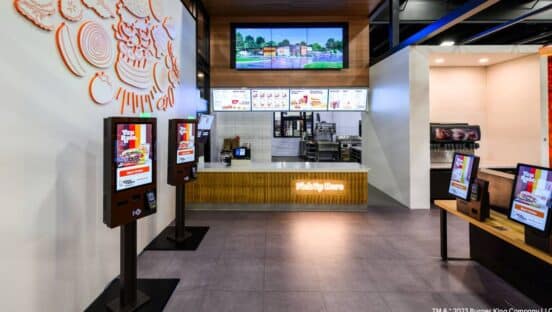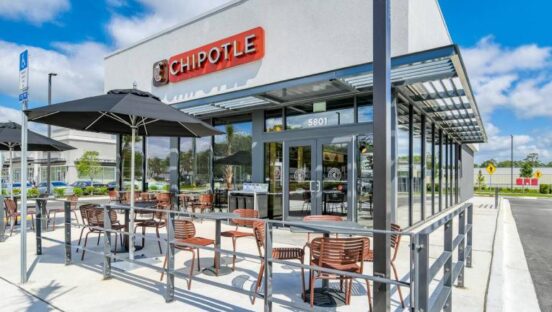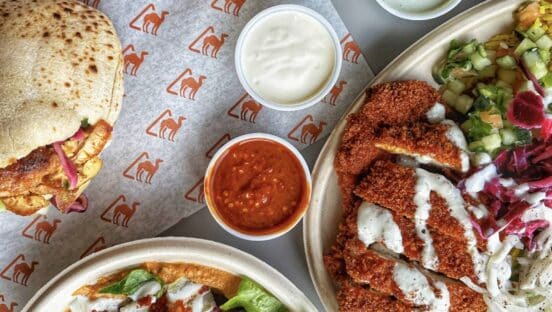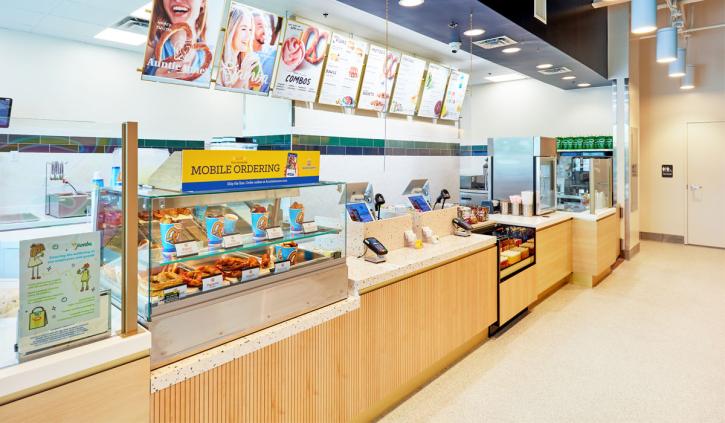

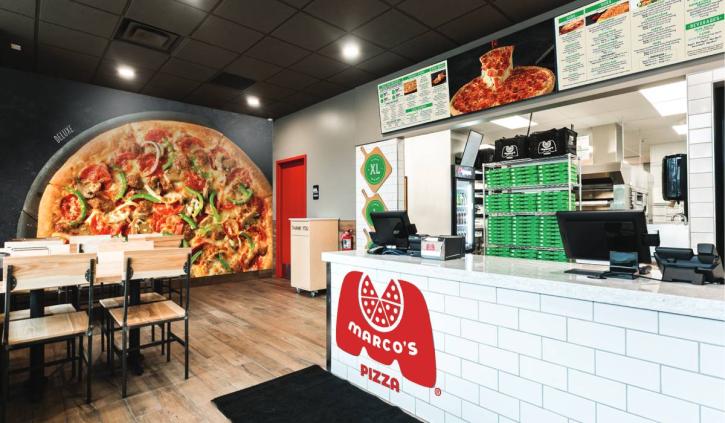






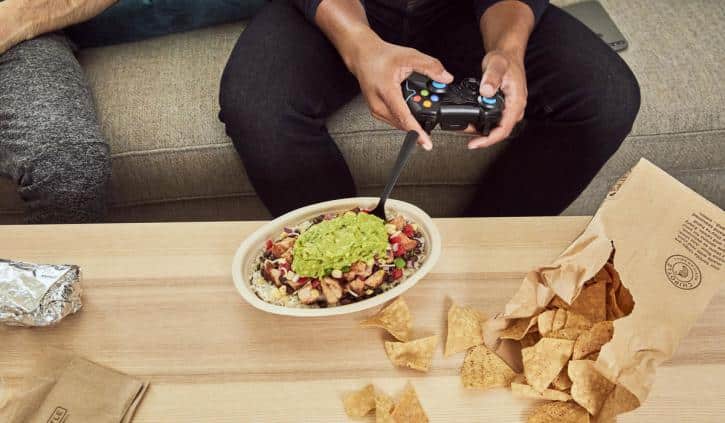







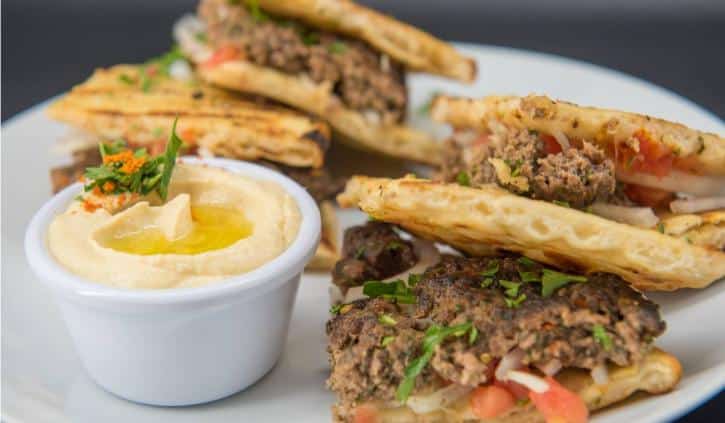

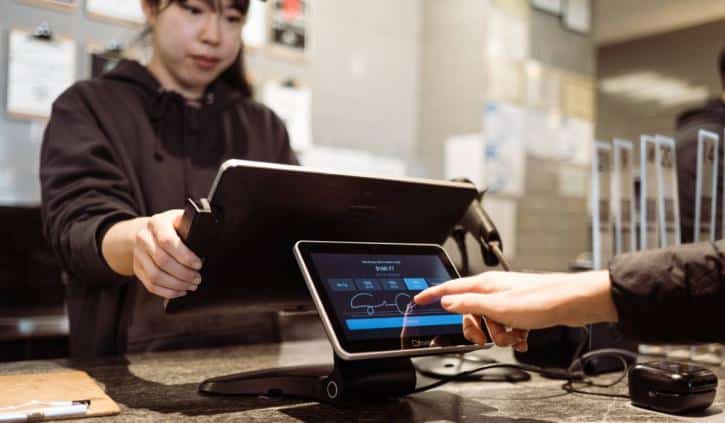

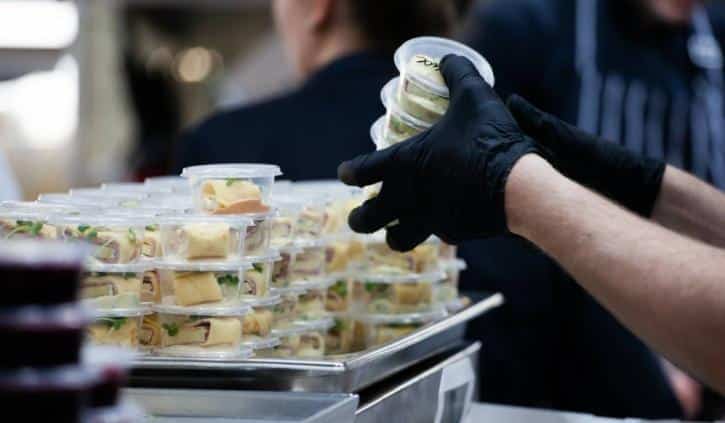

What is the state of the restaurant consumer as the calendar flips into another year? Like always in hospitality, there are far more gray areas than concrete answers. Inflation has headlined much of the sector’s buzz coming out of COVID’s vice. That covers rising costs on the back side and consumer frequency from the front. Some data shows a trade down at the high-income level into quick-service, while lower-income users have trimmed visits but remain part of the equation. Yet even that latter point has begun to turn. Low-income (less than $45,000) sales growth continued an accelerating trend in October, year-over-year, essentially matching middle-income ($45,000–$100,000) growth for the first time since November 2021, according to YipitData. What this suggests, perhaps more than anything, is guests are coming back after inflation’s initial shock. Recession or not, the affordable luxury nature of restaurants has held strong through the wave.
There’s been plenty of growth industrywide alongside all of it, but few are doing so through traffic. Basket size is down (4.6 percent in October, per Revenue Management Solutions). Sales are up (7.6 percent, year-over-year, thanks to 15.8 percent higher price). Traffic has remained in the red (negative 2.6 percent). In fact, via Black Box Intelligence, September marked the industry’s seventh consecutive month of traffic declines.
As macroeconomic forces continue to press, digital adoption through COVID’s window has changed everything. The 2020–2022 era, for all of its disastrous points, will etch itself in history as one of the biggest paradigm shifts on record. The sector went from an innovation laggard to collecting years of ideas in months. Now, operators have more connective tools than ever to address labor shortages, guest experience concerns, and systems to harness data into something well beyond just another email address. But how, where, and when investments fit best and address tangible problems versus flashy solutions is what awaits. And the end result is a horizon with plenty of opportunity and no shortage of questions on deck.
So let’s ask industry leaders what’s coming next.
Jim Holthouser
CEO, Focus Brands
Dual branding as the future of quick service
Consumers today are faced with a wide variety of restaurant and food choices every time they choose to dine out. From hundreds of restaurant options to snacking, smoothies, desserts and coffee, brands continue to innovate and find ways to tempt consumers’ taste buds.
One solution gaining momentum is the concept of dual branding—strong consumer appeal, new products, and the opportunity for franchisees to optimize their revenue
This is where we see the future of quick service.
Focus Brands now boasts a portfolio of 175-plus open co-branded units with 65 more in various stages of development across the country.
While key consumer benefits vary by dual-brand combination, one consistent benefit has been convenience. Having these brands together in one location makes them far more accessible than they are individually. This convenience also creates opportunity for franchisees, as co-branding leads to an expansive menu that drives enhanced unit-level volume. Plus, from an operational standpoint, no additional labor is needed. One store manager can run the location and employees are cross-trained to execute both brands.
Rick Stanbridge
EVP and chief information officer, Marco’s Pizza
Technology is No. 1
In 2023, we’ll see brands heavily invest in relevant technology that benefits customers, franchisees, and team members alike.
Marco’s plans to invest millions of dollars in technology innovations through the next few years. In addition to our cloud-based Marco’s Order Management System (MOMS), we plan to explore, pilot and invest in technologies that enhance the customer experience such as voice-to-text ordering and utilizing AI and machine learning to generate automated promise times. This is only the beginning. With new digital capabilities driving growth, we’re equipped with a solid, ever-evolving technology platform built to meet both current and future business and consumer needs.
Bottom line, relevant technology investments grow business. Technology projects should be completed in an order that provides for the best ROI to franchisees, employees, and consumers. It is a holistic approach that, in turn, will propel brands ahead of the competition.
Technology will play major role in quick service in 2023 and needs to be prioritized. By investing in technology and innovation, franchisors will, in turn, attract more interest from sophisticated multi-unit operators as well—driving overall development.
Scott Snyder
CEO, Bad Ass Coffee of Hawaii
Continuing watch on dine-in seating or not?
The actions to drop café seating all together and only build drive-thrus with walk ups for order ahead and third-party delivery would lead us to believe that dine-in is dead. There’s a strong contingency (me included) that believes there will always be a need to connect on a human level and that restaurants offer that experience like no other.
Even QSR’s own research would indicate that the notice of the “Death Of Dine In” may be premature.
The new table stakes is innovation
With the largest brands having the greatest resources to continually innovate, the pressure is for small to mid-size brands to innovate their menu (most visible), loyalty, delivery, etc. at a pace where they can hold their own in their niche within the market and prevent the competitive gap from the “Haves” to the “Have Nots.”
Rising cost of doing business
Supply chain shortages and increased freight costs have raised prices dramatically in the restaurant industry. Combine those market dynamics with increased cost of labor and restaurant operators must adapt and be prepared to increase prices. What are the different ways to think about this dilemma from a restaurant point of view when our cousins in the grocery business change prices daily? There isn’t that same sense of loyalty with the consumer in grocery as there is in restaurants, yet failure by restaurants to modify more frequently is slowly eating away at their ability to prosper. Ways to think about this from a restaurant perspective range from employee staffing, reducing overhead in other ways, modifying the business model, and set new “norms” for the business model; etc.
Acquisition market
Confusing market; rising inflation combined with “Are we in a recession or not?” Two interesting trends that we’ve observed during this time:
Multi-unit/multi-Brand operators are more interested in taking on new brands if they can acquire existing stores (ideally corporate stores) rather than build or buy under-performing stores.
Investors that are actively playing in these capital constrained market conditions are looking for “distressed” brands as valuations for high-performing brands have been compromised by the uncertainty of the market.
Hoyt Jones
President, Jersey Mike’s Franchise Systems, Inc.
A more open consumer
Technology will remain at the forefront. The pandemic caused a shift to more digital ordering (delivery, pickup). Customers are more open to technology than ever before. They like having different ways to order. Digital is now 40 percent of our sales.
Loyalty programs will also be a priority. Our rewards program was one of the first out there and we want to ensure it continues to grow.
We’ll continue to use technology to communicate to our customers to incentivize them to come in more often. For instance, our Double Points Days are very effective as well as sharing national opportunities such as our recent Feeding America fundraiser that raised over $3.6 million in one weekend.
We continue to look at ways to refine large amounts of data, analyze it and determine the best way to apply it.
At Jersey Mike’s, we continue to focus on operations including training and employee retention. Labor Scheduling Tools can help with retention and efficiency. The technology is very employee-centric. It allows team members to have more flexibility around their schedules, choosing the hours they want to work, which they appreciate.
John Ramsay
VP of Franchise Sales, Noodles & Company
Adaptive growth
Real Estate. Given the lack of inventory, and high demand for growth, brands will need to adapt to the marketplace. Noodles is adapting to smaller footprints, and second-generation sites, not in downtown or entertainment districts.
Labor. As wages continue to increase, and the demand for high caliber team members increases, brands will need to adapt without sacrificing service standards. Noodles has a built a culture based on values, that speaks to today’s workforce. We provide service training to younger team members that maybe have not experienced quality service during the “remote” work environment.
Dine in and takeout business. Noodles has enhanced our online and mobile platforms, knowing that being a leader is critical to standing out from our competitors. Re-setting service standards for dine-in business is critical to showing our guests we care about them.
Franchisee—franchisor relationships. With all of the change over the last two years, trust must be maintained with the franchisee community and franchisees must be engaged and aligned. Noodles has maintained ongoing communication with our franchisees, and they have been included in the adaptations and decisions made over the last two years. Being open and transparent builds trust, and we believe this is the foundation for a great franchisee relationship.
Jake Brewer
Chief strategy officer, Miso Robotics
The future of robotics
In 2023, restaurants will focus on scaling and adoption. We are past the point where it’s a question if robotics and automation are going to be implemented, but rather where in the kitchen. The drink station and the fryers are where we are starting in a big way as they have operationally the largest potential impact to the restaurant.
We’re seeing more restaurants piloting and deploying automated solutions for back-of-house operations. We’re also seeing changes in front-of-house and drive-thrus with more sophisticated kiosks that can make fresh food or take your order respectively, with just the touch of a button.
Looking ahead, big brands will feel more comfortable dipping their toe into true future tech and fully automating certain aspects of the restaurant kitchen and beyond.
Emil Davityan
Cofounder and CEO, Bluedot
Hyper personalization
To lure customers into stores, customization will be marketing driven with digital-first strategies. Brands will experiment with dynamic pricing, personalized menu items, and deals based on a micro-level understanding of the individual customer, whether they’re on-premise for upsell opportunities or on their way to the store. For example, digital menuboards will become more prevalent to display personalized, preferred menu options based on loyalty data, etc.
Smaller footprint stores will emerge focused on off-premise strategies and rapid order pickup
As consumer restaurant habits continue to shift away from in-store dining and mobile ordering becomes more prevalent, some restaurant brands have acquired real estate as well as off-premise technology solutions for new stores uniquely designed for mobile orders, curbside pickup, and the drive-thru. In lieu of in-store dining, we’ll see distributed, smaller footprint stores that offer a highly personalized customer experience and real estate optimized for order pickup, whether that’s dedicated mobile-only drive-thru lanes or curbside pickup spots. These initiatives will be further enhanced by automation such as AI voice ordering, reconfirming order details, and the like.
Fast food remains popular, but competition heats up
Quick-service brands aren’t just competing with their rivals anymore, there’s growing competition between fast-food brands and stores that offer a faster, easier, or more engaging buying experience such as smaller footprint stores, coffee chains with shorter drive-thru lines, or convenience stores that continue to invest heavily in food service initiatives. Some fast food customers are also lured away from quick-serves in search of healthier options, clean ingredients, or even environmentally friendly packaging that reduces the carbon footprint. In some cases, smaller restaurants may need to be more mission-driven and provide a healthier menu to compete.
Multi-brand conglomerates will explore ways to use data across restaurants
In order to lure customers from one store to another and drive frequency across multiple brands, conglomerates will soon leverage customer data platforms (CPD) and efficient technology solutions to enable omnichannel marketing initiatives, consolidated loyalty programs, and other promotional campaigns across different restaurants. For example, we might see mobile apps that encompass multiple restaurant brands and allow customers to use consolidated points or rewards at multiple restaurants. Of course, it will all be dependent on consumers’ openness or sensitivity to shared data across a family of brands.
James King
Founder and CEO, Titan Hospitality Group
Delivery
A recent report found 63 percent of surveyed consumers say their frequency of third-party delivery orders has increased compared to pre-pandemic. This has emerged as a “necessary evil” as the pandemic changed the trends of the general public—having meals delivered to your home seems to be a trend that will be sticking around for a while and possibly forever. Restaurants will need to have that option available and be able to execute at a high-level.
Menu re-development
With rising inflation and the cost of goods at an all-time high for restaurants, virtually all restaurant operators are looking at re-engineering their menus to find unique and creative ways to be able to provide perceived value to the guest in terms of menu items, while tweaking or changing the ingredients used and the portion sizes. I also believe we will see price increases across the board in all sectors of the dining industry to offset these rising costs.
Innovative staffing
In a National Restaurant Association survey fielded between July 14 and August 5, 65 percent of operators said their restaurant does not have enough employees to support its existing customer demand. With the labor shortage that has plagued our industry, operators are having to reimagine how to staff their restaurants. Having to make do with less bodies is the current hurdle for all restaurants, and I believe that we will see innovative ways to combat this issue including, and most likely, technology advancements that will ultimately replace workers.
Marketing and geo-targeting
The way in which we have always marketed, and attempted customer acquisition, is changing rapidly. The traditional ways of advertising in newspapers, magazines, radio, etc. are tactics of the past. The digital age has taken over and restaurants will likely pull back their investments in traditional advertising and invest more on digital platforms.
Dennis Becker
CEO, Mobivity
Gaming enters the fray
Restaurants continue to adapt to today’s economic landscape of inflation and labor shortages. While the digital transformation accelerated by the pandemic helped many restaurants streamline certain operations, these brands are facing headwinds in how to reach and grow their customer base in a privacy-safe but personalized way. As many are seeking creative alternatives to engage with customers, we anticipate more restaurants tapping into new audiences such as gaming in 2023. With more than 200 million video and mobile game players in the U.S., gaming partnerships will help drive customer acquisition and increase diner frequency through real-world rewards.
While we’ve seen gaming activity already from the largest restaurant brands, new technologies will help connect restaurants of all sizes with gamers to promote their apps, in-game rewards, offers and menu items. Once restaurants realize gaming publishers offer full margin protection on the costs of a brand’s offers—in essence, enabling them to offer a ‘discount without discounting’ to their consumers, brands will be in a sprint to secure the best gaming inventory connected with their brand. Connecting brands in this channel drives new guests and can increase utilization of the restaurant’s mobile app for digital ordering, loyalty benefits, promotions and reservations while also helping drive foot-traffic.
Chris Baggott
Cofounder and CEO, ClusterTruck
Indies and ghosts
I think that more and more independent restaurateurs will open delivery-centric kitchens. It is now clear that delivery is a category that consumers continue to demand, but the current delivery ecosystem is not working well. We’re moving into an era where the pressure from third party delivery services is increasingly affecting the bottom line, and there is a real push for reduced fees when it comes to delivery. Especially in the face of rising inflation, something has got to give. Some restaurants will solve that problem with a purpose-built delivery-only facility.
Third-party delivery plays ball
Third-party delivery will become more restaurants-owners friendly, both with affordability and what data those third party companies are willing to share with restaurants. Now that various platforms have been around for some time, there is an immense amount of data out there on every delivery customer. We’re talking about so much unorganized data that restaurants are only now starting to take into account when considering business decisions. The third parties already share a tremendous amount of data. No, the restaurant does not “own” their customer. But they do get really useful information passed through from the marketplaces. As restaurants become more sophisticated e-commerce sellers, they will be able to use this data the same way publishers, apparel, and CPG companies use the data shared by Amazon.
Dining rooms remain, well, dining rooms
Look, the dining rooms are full again. And delivery is still booming. There is much room for consumer growth because restaurants are taking share from grocery. Consumers love prepared food. Dining rooms will specialize in being dining rooms. Delivery companies will specialize in delivering. The era of trying to be all things to all people inside one box will come to an end.
The cost of convenience
We need to look at how consumers are spending their dollars. With the rise of inflation this year, we noticed that price conscious consumers are spending less, while higher income consumers are still spending their dollars and also looking for bargains. So far, at the macro level delivery fees are not affecting total consumer behavior and spending, but I would expect as micro decisions aggregate into macro, the lower-income consumers and others looking for deals will migrate towards free delivery offers. We are starting to see large chains run free delivery promotions in addition to their value combos to combat falling transactions. As consumers migrate to these deals, they will become more commonplace. When value, price, and free become important to the consumer, the companies with the lowest-cost models win. They are best able to meet consumers’ need for value and still make money. Dedicated delivery systems are the lowest-cost model.
Sam Zietz
CEO, GRUBBR
The magnitude of recession (and other thoughts)
The macroeconomic issues defining 2023 will be inflation and recession. There’s no question that we are going to be in a recession, the only question is the magnitude of the recession. It will be interesting to see how companies react to this.
Throughout the pandemic recession, the companies that invested in self-ordering technology were the winners, and many of those that didn’t went extinct. However, when the pandemic hit people were less sensitive to prices. This time, consumers will be more sensitive to price due to inflation and limited wallet share. While restaurants have been able to pass these inflationary prices on to consumers in the past, they will no longer be able to do so in this new recessionary environment.
Restaurants will have to find new ways to innovate and become more efficient, which will exacerbate their need for solutions. The path toward self-ordering technology will become accelerated, and restaurants will realize that they must invest in technology to become more efficient both from a digital marketing perspective and from an operations perspective. The restaurants that are the most efficient will be the ones that win the wallet share of consumers.
It has been interesting to see the premiums that restaurants have been able to pass on to consumers as a result of commissioning third-party delivery services. Apps like Grub Hub, Uber Eats, and Door Dash charge restaurants exorbitant fees to use their services, fees that restaurants have been passing on to consumers. However, in 2023’s tight inflation/recession environment, restaurants will no longer be able to do this and will in fact have to fight for consumers, who more and more will begin to pick up their food themselves or dine in to avoid these fees.
Restaurants can’t control food, rent, or utility costs. The only two other variables that they can control are payroll/labor costs and marketing costs. As such, restaurants have to become more efficient in their digital marketing and get smarter to be able to bring in their clients. Restaurants will invest more heavily in loyalty programs to develop a better understanding of their customers and how to highly target them, this way they can find more similar customers in a cost-effective, digital manner. The goal of restaurants is to retain and attract customers, and the more information that you know about these customers, the higher likelihood you will continue to keep and add to them.
In quick-service and fast-casual restaurants, the low-hanging fruit is self-ordering technology, especially as a solution to labor challenges. Self-ordering technology, such as kiosks and online ordering, reduce or eliminate the need for front-of-house employees, which is especially timely given that labor is increasingly expensive and hard to come by. By adding kiosks, restaurants can increase average ticket and generate more revenue per client which helps go to the bottom line.
In full-service restaurants, the ability to have waitstaff with mobile POS systems or virtual kiosks in a handheld fashion will allow restaurants to handle 50–100 percent more customers and shorten table turns. This is because self-ordering technology eliminates the back and forth; orders will go into the kitchen faster, and payment will be made at the time of purchase. The combination of these two things will allow restaurants to run more efficiently and service more customers.
A lot of companies will come out with solutions because the need for kiosks and related technology will increase, but restaurants need to be careful because 90 percent of these solutions won’t work. Restaurants need to be able to jump into pilots and validate that the technology works and handles everything before they pull the trigger on implementing and utilizing these solutions. It is important to test this technology prior to implementation because there is a lot of customization related to the process flow of the establishment and its existing infrastructure. Many restaurants are too quick to implement technology; they do it wrong and think that the technology doesn’t work when in reality it was improperly implemented and rolled out.
Rahkeem Morris
Founder and CEO, HourWork
The ever-evolving price of labor
Analysis of our November 2022 data revealed that average wage increase across quick-service jobs since last year is 9.3 percent. The job with the most drastic decrease in wages? Shift Supervisors in Emporia, Kansas, at a decrease of 72.78 percent. The job with the most drastic increase in wages? Managers in Huntington, Indiana, at an increase of 149.61 percent
Our November QSR Wage Report offered an insight into how wages at various job titles have shifted across geographies, for example:
Chicago: In the greater Chicago area, wages for managers is up nearly 30 percent, however wages for fast food cooks is down more than 15 percent.
Houston: Similarly, in the greater Houston area, wages for all roles are up between 4 and 12 percent, but wages for fast food cooks is down more than 15 percent.
Los Angeles: However, in the greater Los Angeles area, wages are up across the board for all roles – but notably wages for fast food cooks is up more than 50 percent.
Why are quick-service employees leaving?
Especially heading into December and 2023 when quick-service franchise owners are evaluating their strategies for hiring and retention in a historically tight labor market, HourWork analyzed 30,000 exit surveys by employees, organized by length of tenure before exit from the organization, HourWork found:
Manager was the No. 1 topic mentioned most at an employee’s exit regardless of tenure length, demonstrating how relevant management is when a quick-service employee is considering leaving an organization.
Wage was more relevant than schedule if an employee left within the first seven days. Further analysis of the exit surveys revealed that, in some instances, new employees felt they weren’t paid what they were promised during their interview—indicating an opportunity to tighten the hiring process so everyone is on the same page about pay.
The longer the tenure of an employee, the more likely they will identify their schedule as the reason for leaving their job.
Tal Clark
CEO, Instant Financial
Quick pay on the front line
With the holidays upon us, restaurants and hospitality organizations are jumping on earned wage access (EWA) as a fee-free way to combat the labor shortage we’ve seen organizations face in 2022. EWA allows employees to receive a portion of their earned wages the same day they work at no cost to the worker or employer and helps close the gap during financially tight times between traditional paydays.
In 2022, our Wages and Wellbeing study found that 79 percent of working Americans would be more interested in applying for a job that pays them the same day they work—30 percent higher than in 2018. And more than half (56 percent) of working Americans would stay a month to over a year longer at a job if they could get immediate access to their earned pay after each day’s work at no cost, ultimately saving organizations thousands of dollars annually.
Eighty-seven percent of Gen Z have reported that they would be more interested in applying for a job that pays them the same day they work—the highest percentage of all generations thus far. And with Gen-Zers set to hold up to 36 percent of the workforce by the end of this year, employers will need to take note of their demands to recruit and retain this generation.
Brittain Brown
President, Givex
Challenges and opportunities
One of the biggest challenges for restaurant owners is to get back on their feet after a challenging two years. One challenge—that is also an opportunity—is to re-engage with the staff and employees that are working in that industry. There is more hesitation for people to go back into restaurants knowing there is a risk that they will shut down again. We anticipate that there will be a new type of person that will engage with the restaurant space—through delivery or other ideas for service in the way the restaurant works.
A landscape shift with POS/restaurant technology
We are happy that we are seeing people making their way back to indoor dining, providing another opportunity to improve and evolve POS technology. We are not seeing as many paper menus—we are seeing a lot of digital menu boards and QR codes, and are excited to continue to expand and provide technology solutions for all aspects of the customer experience.
Rishi Nigam
CEO and cofounder, Franklin Junction
Developments on deck
It’s no question that the foodservice industry made technological strides in 2022. While there is a slow, but positive return to on-premise dining, 2022 proved that off premise sales such as take-out and delivery continue to be many restaurant brand’s largest opportunity for revenue growth. We’ve seen a rapid adoption of technology such as mobile ordering, autonomous delivery and an uptick in digital kiosks as owners and investors realize the power that restaurants have to shape communities.
Beyond tech, we also saw new flavors emerge in the market such as hot chicken and Asian cuisine, while consumers put more emphasis on add-ons such beverages, desserts and protein alternatives.
Hopes Ahead
The industry picked up several things in 2022 that Franklin Junction hopes to see gain more traction in 2023. We saw restaurants and their operators become more open-minded about new avenues for growth, seek opportunities to optimize their capacity, and trust e-commerce as a reliable stream of revenue. We saw these open-minded restaurateurs rewarded and we hope this encourages more operators to follow suit.
Looking forward
As we look towards the future of this industry, my hope is that we stray away from mediocrity. We hope 2023 is the year that restaurateurs come to realize they don’t have to compromise customer service for outstanding economics and vice versa. The way our industry is headed, revenue growth and outstanding service –– while embracing new technology –– can go hand in hand.
We’re eager to see restaurants invest in more suburban and sub-rural areas which have been long underserved. This momentum will make the great dining scenes of tomorrow emerge in “flyover states” as population and demographics shift.
Zach Goldstein
Founder and CEO, Thanx
The decline of generic discounts
Restaurants are going to continue scrutinizing their promotional budgets with a focus on driving down their percent effective discount rates (percentage of promo spend over total member spend). Rampant use of generic discounts and freebie offers will decline as a healthier promotional mix of non-discount rewards become the primary engagement strategy.
As third-party delivery competition continues to heat up, restaurants are going to look for ways to engage guests through experiences, exclusive swag, and more. These types of perks incentivize customers to order directly without competing with 3PD for the steepest discounts.
Table-service restaurants will reward their best customers with access to exclusive reservations unavailable to everyone else. This strategy will help ensure that coveted time slots are filled with high value clientele instead of no-shows. Engaging VIP guests with exclusive access to reservations thanks them for their loyalty without unnecessary discounts which is important in driving revenue since these types of guests have proven to be more inclined to spend more regardless.
Loyalty programs will start to become more dynamic as restaurants move to technology solutions that are more self-service and nimble. Marketing agility with respect to loyalty programs will allow teams to better protect margins by altering rewards available and redemption values as COGS fluctuate.
More brands will start to personalize how they engage with guests as customer data becomes easier to access and use for targeting across technology systems. Brands will prioritize data sharing and portability across their tech-stack to make data more actionable from various platforms.
Nour Rabai
Founder and CEO, PITA Mediterranean Street Food
Fast casual dining segments will become more popular
Coming out of the pandemic, inflation will hit full-service restaurants heavily, and fast casual will trend higher in terms of dining experiences for consumers. Consumers will gravitate toward the fast-casual restaurant market for its convenience and away from full-service and fine dining experiences.
Consumers are slowly moving away from takeout and delivery and are starting to enjoy more meals at brick-and-mortar stores
During the COVID-19 pandemic, consumer demand for takeout and delivery services reached an all-time high. Now, consumers are starting to return to restaurants and food halls to sit down and linger in-house.
To gain new customers, menus will have to be innovative
To meet this need, PITA will launch a completely new menu in 2023 highlighting new, innovative items to capture more loyal customers, and of course, keep their current consumers happy. This menu launch will coincide with PITA’s 10th anniversary and will include new items such as spanakopita, veggie grape leaves and an appetizer cheese roll that will double as a dessert.
A large part of the fast casual trend is based on the consumer’s perceptions of sauces While this trend might sound different, Rabai notes that sauces do play a large part in the fast casual concept to enhance the food. PITA will introduce three new sauces in 2023: a cilantro-based Mediterranean sauce, a spicy garlic sauce and a velvety red sauce.
Chris Adams
VP of strategy, Oracle Food and Beverage
A tightly integrated technology strategy will be key to workplace satisfaction and profitability
Restaurants will increasingly become more reliant on using their transaction data to inform and automate their businesses. This will manifest itself in several ways, such as informing robotics in the kitchen for food preparation, in addition to kitchen display systems (KDS) as restaurants kitchens seek to improve efficiency and better optimize for enhance prep station capacity management. This will enable brands to better manage off-premises orders and balance their hybrid operating models.
Operations will continue to be simplified despite digital experiences expansion
In a similar vein to tightly integrated systems across the business, we expect to see brands pursue simplification across all aspects of operations from how they manage payment processing to how they manage their digital expansion. End-to-end payment processing removes complexity and PCI compliance demands for operators. Having a single supplier and point of support for all the store technology and payment processing functions also reduces administrative burden and risk. In addition, we see the point of sales platform as taking on more of the master data management role of the business, and configuring all the content needed for any digital experience from a single platform.
The “restaurant anywhere” experience will expand
Restaurateurs will continue to experiment with the fundamental meaning of restaurant, and non-traditional competitors will simultaneously expand. From grocery to retail; offering an opportunity for consumers to linger or pop in to pick up a meal not only adds revenue opportunities but also foot traffic and consumer preference data. As mentioned before, this expands the need for loyalty programs, and also demands an agile technology stack that can go where customers are, as well as bring customers in. Restaurateurs may very well look to expand beyond the typical pop up, food truck, festival or off-premises event to more interesting, intimate venues like social influencer kitchens, dining rooms and gardens. Ghost kitchen and virtual brands are prime strategies for this growth strategy, both of which require a thoughtful approach to menu design, production and fulfillment.
Loyalty will continue to get more personal and less transactional
The evolution of loyalty will continue to unfold as platforms like the metaverse gain popularity. Cultivating an authentic relationship demands an emotional connection that goes beyond transactional rewards. The objective for restaurants is to create more engagement and stay top of mind with customers, including when they’re not hungry. We’ll see companies move away from points and promotions, and toward more impactful moments for customers such as experiential dining and exclusive offerings. Gamification will play a larger role in driving brand loyalty. Loyalty will focus less on discounts and more on deepening the brand-customer relationship and creating positive brand associations, separate of deals and dollar figures.
Self-service and automation will be a major focus areas for quick-service restaurants
Across the industry, brands will increasingly look to technology to automate business operations. Technology like AI-powered voice will optimize phone orders and the drive-thru experience, while self-service kiosks will help take pressure off staff and offer customers additional customization options and flexibility during the visual ordering experience. The concept of self-service will continue to evolve as consumers become accustomed to placing orders with devices. For example, self-service technology could soon be integrated within in-car digital assistants, letting individuals place a room service order at their designated hotel long before they arrive. Regardless of where self-service kiosks are installed, they will provide restaurants with immediate and future advantages.
Chris Comparato
CEO, Toast
One big consumer trend will be this concept of “What experience do I want? And how do I plan for it?” On the weekends, for example, consumers will have to adapt and plan ahead because the days of ad hoc full-service eating are going out the window unless you’re going to a place that doesn’t take reservations and you want to wait. I also think the eat-on-the-fly culture is here to stay, too. At other times consumers are thinking, “What’s the fastest way we can get food? And what’s going to satisfy our appetite right now?”
Restaurants are going to have an interesting set of choices, probably in the back half of 2023. One of those choices will be around pricing: “Do I maintain the high prices that I’ve increased? And keep them there if inflation starts to tail off?” I think we’re at the breaking point on raising prices. It will be a question of, “Can I hold it? Or should I lower it?” This may force restaurants to look at their menu mix and most profitable menu items and test and learn. “Should we keep that price and see if it holds? Or should we lower it or throw more promos into the mix?”
Giliah Librach
Director of partner operations, ezCater
Get in the bowl game
We think bowls will be the hottest trend of 2023. We’ve seen the rise of bowl meals in 2022 with big names like Papa Johns offering all-in-one dishes, but next year, even more restaurants—big and small—are likely to expand into this space. We know this based on conversations we’re having with restaurants and workplaces alike. People want bowls and restaurants will meet this demand on a national scale. As a result, we predict that we’ll see a large variety of cuisines transform into bowl options – some that you might not expect.
It’s no surprise that America loves their weekend brunch. As employees continue to venture back to the workplace in 2023, we think we’ll see more employers offering breakfast to motivate employees to make their commutes and leave remote work behind. We expect it will eventually become the new norm.
Employees’ expectations are higher than ever when it comes to what they want to eat at work. While classic meals like pizza and sandwiches will never go out of style, we think that more diverse catering menus will surge in popularity. Cuisines from all around the world are expected to venture into office settings. Employers raising the bar to include greater variety in their premium lunch offerings will likely also fuel the return-to-office surge.
Millennials are fueling a nostalgia trend across many industries, including food. Following the height of the pandemic, consumers are looking for upleveled, fun, familiar experiences rooted in comfort. This year, we anticipate restaurants curating trendy spins on classic favorites like PB&Js and mac ‘n cheese.
We believe grains will totally dominate the food space in 2023 for a few reasons. First, they’re cost effective. With increased food costs, restaurants will likely lean into grains due to high profit margins. They are classic comfort food and consumers want comfort right now! They are global. As global food trends continue to grow in popularity, grain-heavy cuisines like Asian, Indian, and Italian will see more of the spotlight. They are versatile. Grains can be used in all day parts and in unique ways to continue to push palates and flavors—things like breakfast grain bowls, rice pudding, pretzel sandwiches—there are so many creative ways to use grains.
Kari Hensien
CEO, RizePoint
10 thoughts, with a focus on safety
A focus on sustainable food production. Climate change is putting food production at risk. Therefore, there will be a renewed effort around sustainable food production, like vertical farming, hydroponics, and aquaponics.
Quality and accuracy are king
To make your customers feel valued and appreciated, get their orders right! Implement solutions to boost accuracy, which will elevate a variety of critical metrics, including improved customer satisfaction and loyalty, increased revenue, positive reviews, word-of-mouth recommendations, etc.
Digital solutions will become more affordable and widely used
Digital efforts don’t have to break the bank. Organize supplier certifications and streamline supplier collaboration in the process. Gain visibility and identify/predict the operational improvements that will maximize your business success.
Continued efforts to overcome conflicts
The food industry continues to face major, concurrent crises, including production delays, food shortages, and extreme weather impacting crops. Food businesses will have to work hard to keep the lights on and deliver products (and promises) to customers.
A rise in workplace accountability
Moving forward, organizations will need to prioritize broader social accountability. This includes a focus on hiring a diverse workforce to ensure your products and services are being delivered by people that represent your increasingly diverse customer base. Now more than ever, treating employees fairly and equitably is key to securing a knowledgeable, stable, and productive workforce.
Training will change
Historically, food businesses trained employees by explaining how things should be done. But what if you thought about training differently? Train, practice, demonstrate, and reinforce to boost employee confidence and retention. Encourage employees to ask questions, seek feedback, and feel empowered. Create a collaborative culture vs. a punitive one.
The supply chain will become more transparent
It’s critical to implement safety and quality protocols for your business, but it’s not enough. You must also inspect safety, quality, and traceability all along the supply chain. Thanks to more affordable, accessible tech tools, this is now possible for brands of all sizes and budgets, and you can get started without a big investment. Focus on what the regulations require and use digital solutions to seamlessly manage your vendors’ safety and QA certifications.
Consumers will embrace the hybrid model
Customers have become accustomed to the hybrid of in-person, pickup and delivery, so food businesses need to excel at all these models, focusing on safety and accuracy for each.
Operational data and programs will gain credibility in the boardroom. Business intelligence will connect operational data and improvement to business performance.
Remote brand protection
A growing number of companies are looking for ways to protect their locations and/or facilities if they can’t physically reach them for audits or inspections. Maybe it’s a travel issue to that area or maybe it’s cost prohibitive, but tech solutions can save quality teams as much as 70 percent, which is a huge win at a time when every dollar counts.
Andrew Glantz
CEO, GiftAMeal
In 2023, individuals are looking to actively engage with brands for social responsibility. They want to have giving back integrated as a part of their experience, not just something a business does on the side to check a box.
Right now, personalization includes customer names, birthdays, when they’re visiting, and what they’re ordering. In 2023, this will go one step further into personalizing to what the customer cares about to build an emotional connection between the customer and the brand.
Restaurant marketing campaigns in 2023 will begin to utilize more user generated content as opposed to professional photographs to create a sense of authenticity and customer connection.







